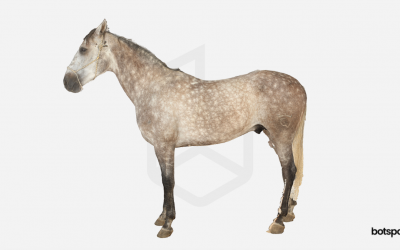INFRARED 3D SCANNER: VISUALIZING THE HIDDEN
INFRARED 3D SCANNER: VISUALIZING THE HIDDEN
If you look at the small range of visible light compared to the entire electromagnetic spectrum, you can already guess how much remains invisible to the human eye.
It has already been recognized for a long time that valuable information is contained in this spectral range, which is not accessible to us. That ́s why numerous imaging techniques have been developed that work with light in the infrared (IR) range (with a wavelength of 780 nm to 1 mm).
For many examinations of people or objects with infrared light, it is useful to create a 3D model in addition to 2D images in order to get holistic information. Consequently, the possible applications for an infrared 3D scanner are very diverse.
Since this light, unlike short-wave radiation such as ultraviolet radiation, does not have an ionizing effect and therefore does not cause any changes to the genetic material as a long-term consequence, it is well suited for the repeated examination of living cells.
NUMEROUS POTENTIAL APPLICATIONS FOR INFRARED 3D SCANNERS IN THE HEALTH CARE SECTOR
Since blood, in particular the oxygen-rich hemoglobin found in it, absorbs infrared light very well, fine vessels can be observed at these wavelengths. When the patient is illuminated in suitable IR ranges, fine veins become visible in the recorded reflections, which, together with a 3D scan of the patient, can be documented over the long term and therefore used for future comparisons. Due to the demographic development of the population and the resulting increase in vascular diseases, new treatment and examination methods are particularly relevant in this field.
In pharmaceutical quality testing, various infrared spectroscopy methods are used to check the surface coating of pills and ensure uniform distribution of active ingredients. Here, additional documentation in 3D can also be an advantage, since two-dimensional images always represent only one side of the pill.
INSIGHTFUL INVESTIGATIONS OF PLANTS
But it is not only the health care sector that can benefit from spectral examinations in the IR range. Since chlorophyll strongly reflects infrared light, this examination method is ideally suited for plant analysis within the development and use of new pesticides and fungicides.
In the context of precision farming, it is possible to investigate exactly on which parts of the plant diseases appear first, since affected areas have less chlorophyll than healthy parts of the plant – in this way, pests can be targeted immediately.
In this way, infrared examinations can help to make the use of these potentially unhealthy substances more selective and eco-friendly. Currently, in-depth research is being carried out in this area. A botspot employee was also involved in the development of plant cameras.
Highly efficient and sustainable management of land areas will be absolutely essential in the future in order to ensure the nutrition of the world’s growing population – intensive research is the basis for this.
ADDITIONAL INFORMATION FROM CULTURAL ARTIFACTS USING INFRARED 3D SCANNERS
Infrared radiation in the range of 780 nm to 3.5 μm is used to visualize underdrawings in paintings: the canvas is illuminated with this spectrum and the reflections are captured by a photographic sensor that is blocked for all wavelengths below this spectrum.
Since underdrawings have different color pigments than the actual paint, they also have different reflective characteristics and become visible that way. With a 3D scanner, also vases and other art objects can be examined for underpaintings and digitized as a 3D model.
CUSTOMIZED SOLUTIONS FROM BOTSPOT FOR EXAMINATIONS IN THE INFRARED SPECTRAL RANGE
This is not more than a small overview of the application areas where important information can be extracted from the infrared range of a texture.
Due to this variety of possible applications, it is important for our research and development work to operate with other wavelengths in addition to the visible light to make the spectral fingerprint of objects and persons even more examinable.
With a custom scan solution from botspot, it is possible to capture high-precision 3D data of persons and objects in visible light as well as additionally in the infrared frequency range.
In this hybrid scan system, first an image is taken that captures the object in visible light for a true-to-scale 3D model with texture in true colors. In the subsequent second exposure within just one initiated scan, special spotlights irradiate the object with IR radiation in selected bandwidths and the reflections are detected by modified camera sensors.



